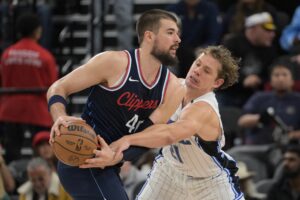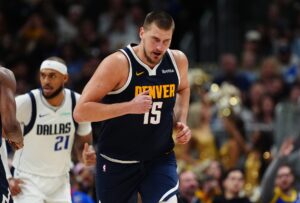Trevor Ariza is heading back to Washington after all.
After a wild Friday night of trade speculation and what seemed like an all-time botch job by Ernie Grunfeld, the Washington Wizards and Phoenix Suns finally worked out a deal that sent Austin Rivers and Kelly Oubre Jr to Phoenix for Trevor Ariza. This is Ariza’s second stint with Washington, after playing alongside John Wall and Bradley Beal during the 2012 and 2013 seasons.
For a team that has been rumored to be shopping any and everyone on the roster just last month, this isn’t exactly the blockbuster trade that many were expecting the Wizards to make. But that doesn’t mean it isn’t going to have a big impact on the remainder of Washington’s season.
Pros and Cons: Washington Wizards Trade for Trevor Ariza
PROS
Sitting at 11-18 at the time of the trade and in the midst of a 4-game losing streak, the Wizards are hoping Ariza’s arrival ignites a turnaround. Given Ariza’s history in DC, there’s certainly reason to be hopeful. Ariza wasn’t just good in Washington alongside Wall and Beal. He was better than he’s ever been. During the 2013-14 season, Ariza had career highs in points, rebounds, 3p%, and efg%. With Ariza’s help, Washington reached the Eastern Conference semifinals that season.
Washington is struggling mightily from behind the arc this season, shooting just 32.8% (27th). They’ll be banking on Ariza to help them get that up. Plus, his ability to guard on the perimeter and rebound should help a team that is amongst the league’s worst. Only Cleveland has a worse Defensive Rating than Washington’s 114.5, and they rank 27th in team rebounding. Ariza joins the Wizards averaging 5.6 rebounds per game, tied for most with Otto Porter Jr among active Wizards players (Howard leads the team with 9.2).
The Wizards didn’t just add a solid three-point shooter. They also got rid of two of their least efficient scorers. Rivers and Oubre accounted for more than 17 shots a game, with Oubre averaging a career-high 10.5. They just weren’t converting, at least not as well as other guys on the roster. Among the 9 players averaging at least 6 shots and 14 minutes per game, Rivers had the worst efg% (.477). Only Rivers and Wall have a worse efg% than Oubre (.500). But Oubre’s 10.5 shots have to go somewhere.
The likely beneficiary: Otto Porter Jr. Porter is currently day to day with a knee injury, but when he’s back, this trade should open things up for Washington’s highest paid, highly efficient, and often underutilized wing. Fellow wing and Washington newcomer Sam Dekker could benefit, as well. He’s shown promising flashes as an effective new piece in DC. Don’t be surprised if he’s a regular contributor sooner than later.
The move should mean more opportunities for Tomas Satoransky, too, who has recently found himself in the starting lineup. After struggling to find minutes through the team’s first fifteen games, Satoransky has seen his minutes shoot up. Since November 18, his mpg have doubled, up from 12 to 24. In that time, he’s also raised his shots per game from 3 to 5.2 and his shooting percentage from 31.5% to 52.5%. The more he sees the floor, the better.
CONS
Although Oubre may have been having a less than stellar season thus far, he did represent an emerging young player for Washington. It’s always tough to let that go. However, with Oubre heading towards free agency, it’s unlikely the Wizards would have been able to resign him after this season anyway. The thing is, Washington didn’t exactly get an efficient scorer back for the two inefficient ones they lost. Although Ariza has been a great three and D wing, it’s been a tough season. This year’s efg% of 48.9% is his worst since 2011-12, and worse than Oubre’s efg%. Plus, Washington is unlikely to resign Ariza after this year. They simply have too much money already tied up in Wall, Beal, and Porter. While there’s a reason to be hopeful, nothing’s certain. And nothing has been secured up long-term, either.
The short-lived Austin Rivers experiment may not have been great but it did represent DC’s attempt to deepen the guard position, an issue that has plagued them in the past. Unless there are more pieces coming, the Wizards are once again thin at guard behind their all-star starting backcourt of Wall and Beal.
Losing both Oubre and Rivers will also affect the Wizards’ ability to go small, something they have done quite a bit this season, especially with Dwight Howard sidelined. Rivers and Oubre were both integral to those small-ball lineups and their departures leave a glaring hole. For now, coach Scott Brooks will need to do some lineup experimentation. Does Ian Mahinmi get thrown back into the mix? Or maybe first-round pick Troy Brown Jr finally becomes a regular part of the rotation? Whatever it is, Brooks will need to figure it out quick. The Wizards are on the outside looking in on a competitive Eastern Conference Playoff race and they’re running out of time to turn things around.
What’s Next?
This trade might create more questions than answers for a Washington team that has just seemed lost all season. It’s still unclear when Dwight Howard will return and how he’ll fit in with these new-look Wizards. Plus, there’s a reason to be concerned that the original botched trade could further splinter an already tense locker room. They aren’t completely out of the playoff race, yet. Ariza’s arrival could ignite a talented team that has seemingly weathered the early-season storms both on and off the court. Are there more moves to come? We’ll just have to wait and see.
Maim Image:
Embed from Getty Images






